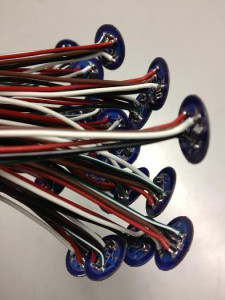 Titanium is used in aerospace, medical devices, watches and bicycles – just to name a few ways it is important to our daily modern lives, but it is also an electronic circuit. This new life for this versatile metal is a world first – designed, patented and manufactured in Melbourne, Australia.
Titanium is used in aerospace, medical devices, watches and bicycles – just to name a few ways it is important to our daily modern lives, but it is also an electronic circuit. This new life for this versatile metal is a world first – designed, patented and manufactured in Melbourne, Australia.
Dr. Wal Berryman is Managing Director of Hybrid Electronics Australia Pty Ltd and believes the research and practical execution of this discovery could be the beginning of a global revolution.
“Titanium electronic circuits could well become the new technology of the future in the electronics industry,” he says.
Titanium’s low density, combined with positive properties of being lightweight, easily fabricated, corrosion-resistant, lighter & stronger than steel and the added benefit of withstanding extremes of temperature, means that titanium can succeed where other metals fail.
These unique characteristics enable the patented electronic circuit to do more than traditional printed circuit boards (PCB’s). It is potentially the best technology to manufacture fluid measurement of pressure, temperature and flow sensors. Titanium electronic circuits can also be used in applications that involve weighing, force measurement, load cells and heating elements. The titanium electronic circuits enable products to work well in hostile environments and have greater long-term reliability than the standard PCB’s.
A titanium electronic circuit is made by printing insulators, conductors, resistors and other materials onto the titanium metal. Electronic and non-electronic components are then added to the printed titanium to produce a complete electronic circuit that can be “bolted on”. The titanium electronic circuit can be welded, bent and formed, and also have holes added for mounting, with no need for a containing box.
Titanium’s Advantages include:
Highly accurate active circuit calibration
Higher reliability due to less solder interconnections
Wider operating temperature range
Smaller size, exceptionally compact (approximately half the size of the most complex PCB), PLUS a higher packing density
Fully encapsulated for complete protection from the environment
Enhanced reliability



